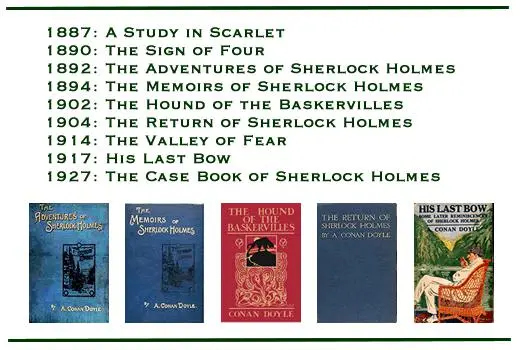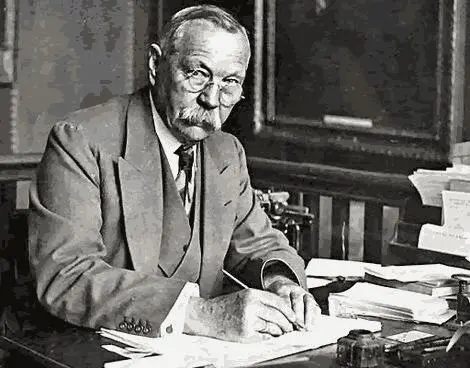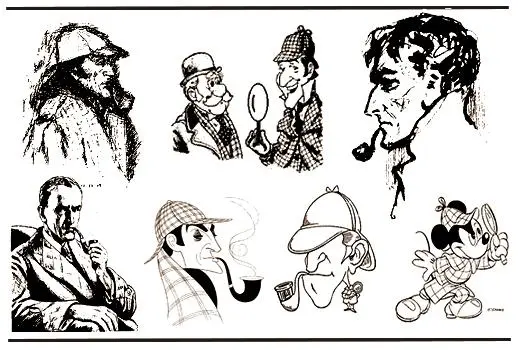The work was reprinted in 1889 and many more times, but Conan Doyle never earned another penny from it. Sign of the Four, the second work to feature Holmes and Watson, also achieved a small, but by no means brilliant, success.

While writing the early Holmes stories, Doyle also began what he considered his most important work: chivalric, historical novels based on British history, primarily, Micah Clark, Sir Nigel, and The White Company. Although these novels were widely admired, none of them created the stir caused by the first series of short stories featuring Sherlock Holmes and John Watson that appeared in The Strand Magazine, starting in 1891. Despite their overwhelming success, Conan Doyle never suspected that these stories would be the foundation of his literary legacy. After writing three series of twelve Holmes stories, receiving the unheard-of sum of £1000 for the last dozen, Conan Doyle was sick to death of the popular detective and decided to kill him off in the 1893 story, "The Final Problem." Conan Doyle considered the Holmes stories light fiction, good for earning money, but destined to be quickly forgotten, the literary equivalent of junk food. "I couldn't revive him if I would, at least not for years," he wrote to a friend who urged Holmes's resurrection, "for I have had such an overdose of him that I feel towards him as I do towards pâté de foie gras, of which I once ate too much, so that the name of it gives me a sickly feeling to this day." The vehement public reaction to Holmes's death must have shocked Conan Doyle. People wore black armbands and wrote him pleading--or threatening--letters. Still, it was nine years before he capitulated to public opinion and brought Holmes back.
The third Holmes novel, The Hound of the Baskervilles, appeared in nine parts in The Strand Magazine during 1901-2, but it was presented as an old case from Watson's records, completed before Holmes's death. Conan Doyle did not make up his mind to resurrect Holmes until 1903, when he wrote "The Empty House." He continued, reluctantly, to produce Holmes stories until 1927, three years before his own death.
Conan Doyle became an important public figure, twice standing (unsuccessfully) for Parliament. He was knighted for his efforts on behalf of the Boer War, both as the author of a persuasive, pro-war book and as a volunteer, caring for wounded British soldiers in the field. He even took on several real-life mysteries, using Holmes's methods and his own status as a famous author to free two unjustly imprisoned men.
The First World War tore apart Conan Doyle's familiar world. Like so many others, he lost close family members to the conflict. Conan Doyle's brother-in-law and nephew died in combat, while the influenza pandemic took his brother Innes and his eldest son Kingsley, weakened by war wounds. During the war, he managed to have himself appointed as an observer for the Foreign Office, but he was kept away from the horrors of the western front for fear that he might reveal to the public things that the military would rather have kept quiet. Even Sherlock Holmes served England in the war. In the story that Conan Doyle intended to be the last Holmes outing, His Last Bow, published in 1916, Holmes outwits a German spy.

Conan Doyle found a refuge from the horrors of the war, and he clung to it tenaciously. Starting in 1916, he publicly declared himself a spiritualist, and over the next few years he made spiritualism the center of his life, writing on the subject and traveling all over the world to advocate his beliefs. Never afraid to take an unpopular stand, Conan Doyle wrote a book in 1922 called The Coming of the Fairies, in which he defended the veracity of two young girls who claimed to have photographed each other playing with actual fairies and goblins.
Towards the end of their lives, long after Conan Doyle's death, the aged "girls" admitted to having used paper cutouts as stand-ins for the fairies. Interestingly, Conan Doyle's own Uncle Richard had invented, in his book illustrations, the typical representation of a fairy as a little girl with dragonfly wings and a gossamer gown. No matter how many times Conan Doyle was tricked by mediums later proven to be dishonest, he continued to believe in spiritualism. The famous American magician Harry Houdini made a project of trying to convince Conan Doyle of his error, but all he managed to do was ruin their friendship. Houdini saw spiritualism as cruel because it gave people false hope; Conan Doyle, who was already suffering from serious heart disease, wanted to believe that death was a grand new adventure. He fought his infirmity, trying to continue writing and traveling as before. He died at the age of 71, secure in his spiritualist beliefs.
Doctor, writer, believer in the supernatural--Conan Doyle's personality encompassed all these traits that contributed to the Sherlock Holmes stories we love to read today. Conan Doyle's fanciful imagination, combined with his scientific training, created ideas that have helped to shape the modern mystery and science fiction genres. One of the first to anticipate the dangers of submarines in warfare, he wrote a Sherlock Holmes story on the subject. His novel The Lost World is the ancestor of Jurassic Park and countless other films. Another of his stories, "The Ring of Thoth," was probably the plot source of the 1932 film The Mummy with Boris Karloff. An 1883 medical article called "Life and Death in the Blood," outlining the imaginary voyage of a microscopic observer through the human body, anticipated the main idea behind the film Fantastic Voyage. Conan Doyle's most long-lived idea, however, was Sherlock Holmes himself, who has continued to evolve in our time through the works of other writers and filmmakers, taking forms even his creator could never have imagined.

As a Halloween costume, it's almost too easy--just wear a deerstalker cap, stick a calabash pipe between your teeth, and carry a magnifying glass.
1 comment